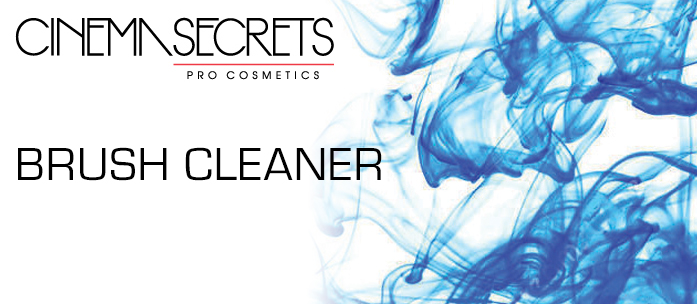How Often Should I Clean My Makeup brushes
How Often Should I Clean My Makeup Brushes?
Makeup brushes are essential tools in any beauty routine, but they can quickly become breeding grounds for bacteria, oils, and product buildup if not cleaned regularly. Proper maintenance of your brushes not only ensures better makeup application but also protects your skin from potential irritation and breakouts. In this guide, we’ll explore how often you should clean your makeup brushes, why it’s essential, and the best practices for keeping them in pristine condition.
Why Is Cleaning Makeup Brushes Important?
Cleaning your makeup brushes is crucial for several reasons. Firstly, it prevents bacteria from building up on the bristles. Brushes collect oils, dead skin cells, and leftover product with every use, creating an environment where bacteria can thrive and potentially lead to skin infections or acne. Secondly, clean brushes ensure smooth and even makeup application. Dirty brushes often result in patchy or uneven results because of product buildup. Thirdly, regular cleaning extends the longevity of your brushes. When residue is left to accumulate, it can break down the bristles over time, reducing their lifespan. Additionally, using clean brushes protects your skin by preventing clogged pores, irritation, and breakouts, which is particularly important for individuals with sensitive or acne-prone skin. Finally, frequent cleaning prevents cross-contamination, especially if you use brushes for multiple products or share them with others.

How Often Should You Clean Your Brushes?
The frequency of cleaning your makeup brushes depends on the type of brush and how often you use it. For foundation and concealer brushes, which are used with liquid or cream products, it’s best to clean them after every use or at least two to three times a week. Liquid products can trap bacteria and oils more readily, making frequent cleaning essential for hygiene and flawless application. Eyeshadow brushes, which are used with powders and touch sensitive areas like the eyes, should be cleaned weekly. While powders are less likely to harbor bacteria, regular cleaning prevents color buildup and ensures smooth blending. Eyeliner and lip brushes deal with highly pigmented products and require cleaning after every use to remove dried product and avoid cross-contamination. Blush and bronzer brushes, which typically work with powders, can be cleaned weekly to remove oils and maintain even application. Powder brushes, used for setting powders and covering larger areas of the face, can be cleaned every one to two weeks since powders are less likely to promote bacterial growth. Makeup sponges and beauty blenders, however, should be cleaned after every use because their porous nature makes them more susceptible to bacterial growth than brushes.
Best Practices for Cleaning Makeup Brushes
Cleaning your brushes doesn’t have to be a daunting task. Start by gathering the necessary supplies, such as a gentle brush cleanser or mild shampoo such as the one from Cinema Secrets makeup cleaner- a quality cleaner that will ensure longevity and correct makeup application, a bowl or sink, a brush cleaning mat or your palm, and a clean towel for drying. Begin by wetting the bristles with lukewarm water, taking care to avoid submerging the brush handle to prevent loosening the glue that holds the bristles in place. Next, apply a small amount of cleanser to your palm or cleaning mat and swirl the bristles gently to break down makeup residue. Rinse the bristles thoroughly under running water until the water runs clear, ensuring all soap is removed to prevent residue from affecting makeup application. Finally, gently squeeze out excess water with a towel, reshape the bristles, and lay the brush flat or at an angle to air dry. Avoid drying brushes upright, as water can seep into the handle and weaken the glue.
Tips for Maintaining Clean Brushes
To keep your brushes in optimal condition, consider spot cleaning between uses, especially with eyeshadow brushes. Spray-on brush cleaners are convenient for quick touch-ups and help minimise colour transfer. Investing in brush guards can help maintain the shape of your brushes as they dry, extending their lifespan. It’s also a good idea to separate brushes by use, avoiding mixing products on a single brush to minimise contamination. Make time for regular deep cleaning sessions every week to ensure all brushes are thoroughly free of residue. Lastly, replace worn brushes when the bristles begin to shed, lose their shape, or feel rough on the skin.

Common Mistakes to Avoid
When cleaning your makeup brushes, avoid using hot water, as high temperatures can damage the bristles and loosen the glue. Do not soak the entire brush in water, as this can cause the handle to warp and the bristles to fall out. Skipping regular cleaning is another common mistake, as even brushes that appear clean can harbor bacteria and oils that affect your skin and makeup. Improper drying is also problematic; always dry brushes flat or angled downward to prevent water from seeping into the handle. Lastly, avoid overloading brushes with product, as excessive amounts can lead to faster buildup and more frequent cleaning requirements.
Conclusion
Cleaning your makeup brushes is a simple yet essential part of your beauty routine. By maintaining a regular cleaning schedule—from daily spot cleaning to weekly deep cleans—you can keep your brushes in excellent condition, protect your skin, and ensure flawless makeup application every time. Whether you’re a casual makeup user or a professional, clean brushes are the key to achieving your best looks while keeping your skin healthy and glowing.






